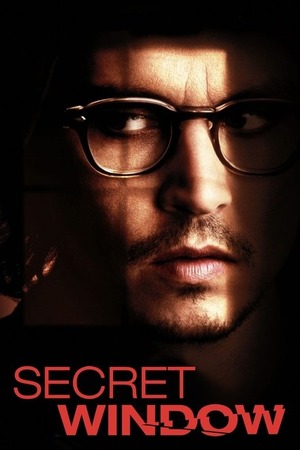
Directed by: David Koepp
Based on the novella by: Stephen King
Starring: Johnny Depp, John Turturro, Maria Bello, Timothy Hutton
🪞 Introduction: The Writer’s Mind as Haunted House
Secret Window (2004) is a psychological thriller that externalizes the creative mind’s darkest corners. Mort Rainey, a writer in the throes of divorce and self-doubt, retreats to a lakeside cabin, only to be accosted by a menacing stranger, John Shooter, who accuses him of plagiarism. As Mort’s world unravels, reality and delusion blend, and the film becomes a hall of mirrors reflecting anxieties about authorship, originality, and the fragile self.
📚 Plagiarism and the Crisis of Authenticity
At its heart, Secret Window is about the terror of being exposed as a fraud—a fear that haunts not only writers, but anyone who creates. Mort’s denial of Shooter’s accusation becomes a desperate attempt to preserve his identity as a “real” artist. The missing pages of his story, the ambiguous timeline, and the circular logic of Shooter’s demands all reinforce the sense that truth itself is slipping away.
Plagiarism here is not simply theft, but a metaphor for the collapse of the boundaries between self and other, original and imitation. In Mort’s case, the anxiety is literalized: Shooter is revealed to be a dissociated personality, the product of Mort’s own guilt and creative stagnation.
🧠 Split Identity and Psychological Dissociation
As Mort investigates Shooter, the film laces its narrative with clues—mirrored reflections, voices from empty rooms, and subtle shifts in Johnny Depp’s performance. The truth, hidden in plain sight, is that Shooter is a split-off alter, a vessel for Mort’s repressed rage and shame. The story’s unraveling parallels Mort’s mental disintegration, culminating in acts of violence that he cannot—or will not—recall.
The motif of the “window” operates on multiple levels: it is the site of voyeurism, transparency, and ultimately, the shattering of reality. When Mort finally confronts his other self, the house—his mind—collapses into chaos.
🛏️ Isolation, Paranoia, and Creative Madness
Set in a remote cabin, the film amplifies the theme of isolation. Mort’s only companions are his dog, the echo of his estranged wife, and the increasingly intrusive Shooter. The cabin is both a sanctuary and a prison, echoing the paradox of the creative process: solitude is necessary for invention, but it is also the breeding ground for madness.
As Mort’s paranoia deepens, so too does his creative frenzy. The film uses physical decay—broken locks, boarded windows, spreading rot—as analogues for Mort’s internal breakdown. Every attempt to restore order only accelerates his decline, until the final collapse is both inevitable and tragic.
🔪 Violence, Retribution, and the Inescapable Past
The violence in Secret Window is less about spectacle and more about psychological inevitability. Mort’s final acts—murder, cover-up, self-justification—are not simply crimes, but symptoms of a fractured identity seeking catharsis. The past, in the form of marital betrayal and creative failure, returns with a vengeance.
The film’s final image—a lush cornfield, Mort’s new “secret garden”—is both an escape and a tomb. The cycle of guilt and creation continues, hidden behind the facade of normalcy.
🎯 Final Thoughts
Secret Window is a chilling meditation on the cost of creative self-deception. Its symbolism—mirrors, windows, missing pages—serves as a warning that the boundaries between fiction and reality, self and other, are never as secure as we wish. In the end, it is not the accusation of plagiarism that undoes Mort Rainey, but his own inability to face the truth of who he has become.